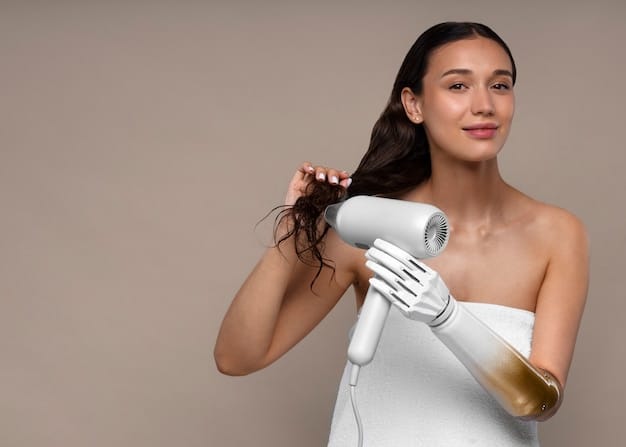
One of the main challenges with hair styling is managing the oil levels. Oily hair can be hard to style and often leads to a greasy look by the end of the day. Straightening or blow-drying might improve its appearance initially, but oily roots can quickly flatten the hair again, making it look unappealing. This can be especially frustrating after putting in the time and effort to style it.
This article discusses why hair tends to get oily when straightened and provides tips on managing this issue. Here are some common reasons for greasy hair and ways to handle them:
1. You’re shampooing too often: Washing your hair every day can strip it of natural oils, causing your scalp to produce even more oil to compensate. Try washing your hair less frequently, using a clarifying shampoo to remove any build-up.
2. You’re applying conditioner incorrectly: Conditioners should be used mainly at the ends of your hair, not the roots. Using it near your scalp can make your hair oily.
3. Your showers are too hot: Hot water can strip your hair of its natural oils, prompting your scalp to produce more oil. Use cooler water and gentle shampoos to avoid this.
4. Your styling products are too heavy: Using heavy products can weigh your hair down, making it look greasy. Opt for lighter gels or mousses.
5. You’re straightening your hair too often: Over-straightening can cause your scalp to overproduce oil, leading to greasy hair. Limit straightening to once or twice a week.
6. Hair styling tools are dirty: Using dirty brushes or tools can transfer oil and dirt to your hair, making it greasy.
7. Overuse of heat-styling tools: Excessive use of heat-styling tools can make your scalp produce more oil. Try to minimize the use of these tools.
8. Using the wrong products: Some hair products can clog the scalp and increase oil production. Choose products suitable for your hair type and avoid heavy oils and silicones.
9. Over-brushing: Brushing too frequently can stimulate oil production. Limit brushing to twice a day and use a wide-tooth comb to detangle your hair.
10. Genetics: If oily hair runs in your family, you might be more prone to it. Focus on preventive measures to manage this.
11. Medical conditions: Conditions like seborrheic dermatitis or thyroid imbalances can cause oily hair. Consult a doctor for appropriate treatment.
10 Ways to Make Your Hair Less Greasy:
1. Use dry shampoo: It absorbs excess oil and keeps hair looking fresh between washes.
2. Balance your brushing: Find a balance that works for your hair to distribute natural oils properly without over-stimulating oil production.
3. Wash your hair less: Washing too often can increase oil production. Cut back on how often you wash your hair.
4. Try not to touch your hair: Touching your hair can transfer oil from your fingers to your hair.
5. Choose your products wisely: Limit the number of styling products you use to avoid excess build-up.
6. Avoid always straightening your hair: Too much heat can lead to greasy hair. Try to minimize heat styling.
7. Reduce heat styling: Let your hair air dry when possible and limit the use of heat-styling tools to a few times a week.
8. Use the right products: Pick shampoos and conditioners designed for oily hair.
9. Avoid over-brushing: Limit brushing to twice a day to prevent stimulating oil production.
10. Keep your scalp clean and healthy: Regular washing and gentle exfoliation can help maintain a healthy scalp.
Which Oil Is Best for Hair?
Using the right kind of oil, depending on your hair type, can be beneficial. Oils like coconut oil, almond oil, and olive oil are good for hair, but it’s important to use them properly.
Should I Straighten My Hair Every Day?
Straightening your hair every day is not advisable as it can cause damage over time, leading to split ends and breakage. Limit straightening to once a week and always use a heat protectant.
Conclusion
Oily hair after straightening is often due to a chemical reaction between your hair, scalp, and styling products, causing a build-up. Avoid products with silicones that clog pores and look for hair care products designed to manage oiliness.